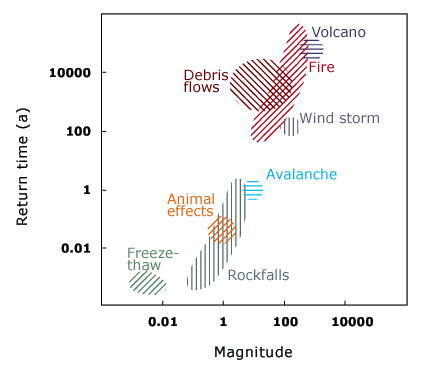|
Frequency and magnitude of disturbances
are often inversely related. Frequently occurring disturbances are normally less
severe than more rarely occurring disturbances.
This may also be true regarding only one type of disturbance. For example, occasional
fires are often hotter than more frequent fires because of the higher accumulations of fuel.
On the other hand, frequency and magnitude are not necessarily related. E.g. in some catchment areas,
a debris flow triggered by a high rainfall event may itself trigger additional debris flows of high
intensity, thus leading to several high intensity events within a short interval.
Some types of disturbance can be relatively frequent in certain regions and almost
absent from others (e.g. fire), but with very different effects if they do occur.
In the following diagram, which includes data of many different
sources, magnitude is
defined as combination of spatial extent and severity.
|

